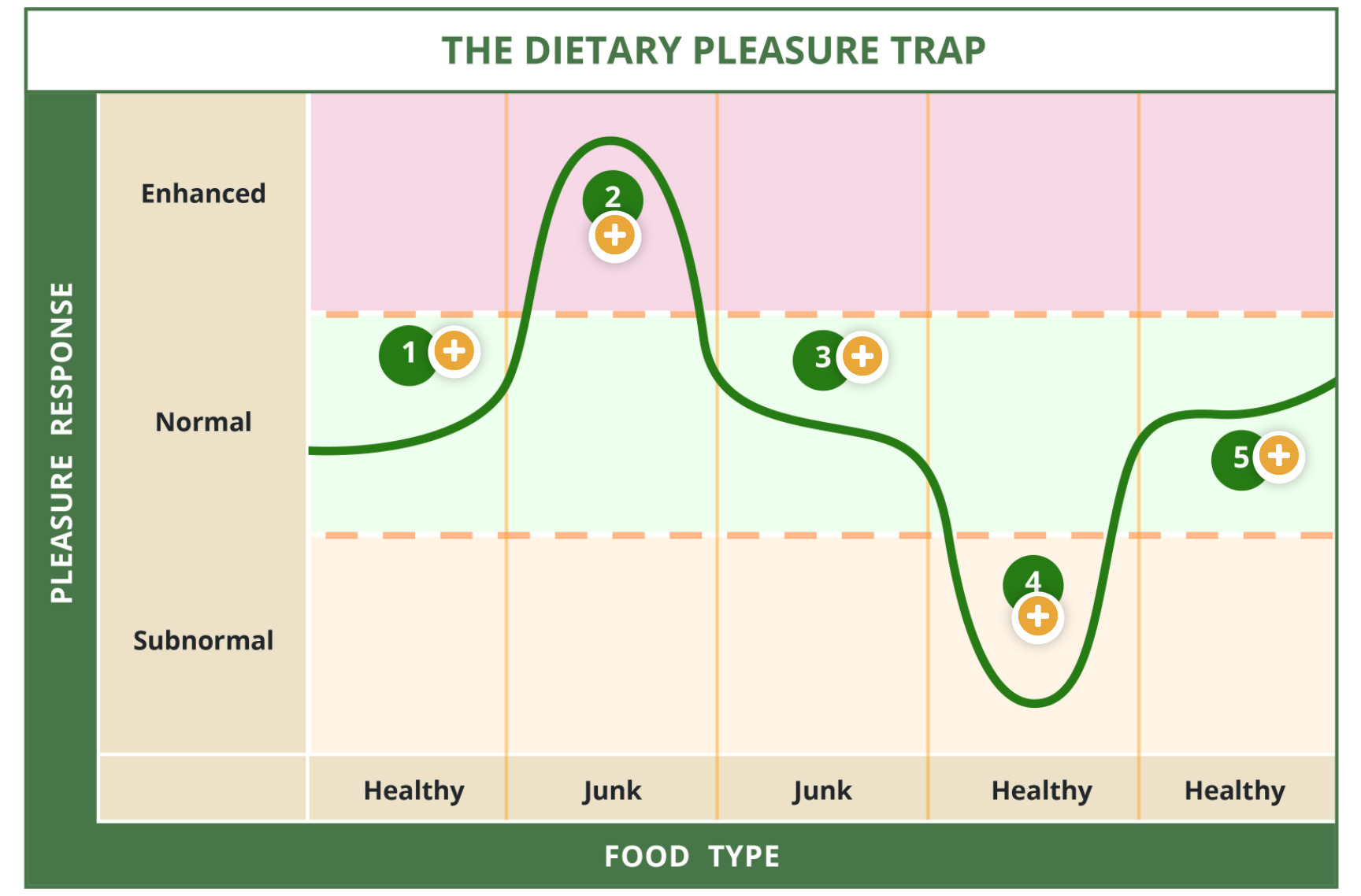Dr Fuhrman recommends tapering down our salt intake over several weeks instead of cutting it out suddenly. If we suddenly stop eating salt, some people may experience hyponatremia (low sodium). Tapering down our sodium intake slowly is a smoother journey.
At offset 5:50 of this video, Dr Fuhrman explains that it's helpful to taper down our salt intake slowly over time.
Do our taste buds adapt to low sodium meals? Yes! How? In the short videos below, Dr Greger explaining the underlying science. After following a low salt or salt-free food system for a few weeks, our taste buds start loving the new taste! And regular food (with regular amounts of salt) starts tasting too salty!
Articles by Dr Greger:
- (2018) Healthier Salt Substitutes
Videos by Dr Greger:
(2 mins) Transcript. The longer we eat healthier foods, the better they taste! When we start eating low salt preparations, our taste buds start enjoying the "low salt taste"! After a few weeks on a low salt diet, regular preparations (with high amounts of salt) start tasting too salty and we stop preferring high salt preparations — we start enjoying low salt preparations.
(4 mins) Transcript. Practical ideas on how to lower our salt intake. For example, cook at home and avoid processed foods! Another idea idea is to "choose a packaged food with fewer calories than grams of salt. With this strategy, if we consume 2000 calories in a day, we'll consume < 2000 grams of salt that day. A related video: Canned Beans or Cooked Beans? (3 mins, 2013) explains that by rinsing and draining salted canned beans, we lose 50% of the salt.
Most of us are accustomed to consuming high sodium meals. If we cut down our salt intake, we may not enjoy the flavor of food any more. But if we persist with low sodium meals, our taste buds make adjustments over time, and we start enjoying low salt, low sodium meals! Then, if we consume the same high sodium meals that we were eating earlier, we dislike them — they are too salty! What's going on? How could the same (salty) meal taste so different?
I chanced upon this fascinating infopic by Dr Doug Lisle (a psychologist) in the plant-based nutrition course offered by T Colin Campbell Center for Nutrition Studies. The infopic illustrates a key concept in the book The Pleasure Trap (225 pages, 2006) by Dr Alan Goldhamer and Dr Doug Lisle.

The discussion above applies to salt too! Understanding the Five Phases of the Pleasure Trap is helpful in a Low Salt or No Salt journey. When we are in Phase 4 in our journey (when we go back to whole, natural foods with low salt or no salt), we may find such meals insipid. However, if we persist, then Phase 5 will emerge and we will start enjoying low sodium and low salt meals!
How to adapt our taste buds to salt-free preparations? Some ideas from personal experience (with examples from Indian cuisine):
1) New Preparations: Whenever we make a new recipe that's different from a traditional recipe that we are accustomed to: make it salt-free! Add some extra tart ingredients: lime/lemon/tomato/pineapple/amchoor/rhubarb/kokum/sumac/anardana and add extra herbs & spices. For many of us, Rainbow Salads (with a rich variety of colorful vegetables and some fruits) are new to our palette — we may choose to make them salt free! Such salads taste great without any salt!
2) Tuber-Centric Recipes: Bake or microwave or steam a sweet potato or a yam: add lemon-pepper seasoning, or add lemon juice & black pepper. Optionally, add some salt-free herbs and spice mixes. Does it taste good? Most likely, yes! Without any salt. We can do the same with potatoes too! The inherent sweetness of sweet potatoes and potatoes, combined with fresh herbs, dried spices and something tart is bursting with flavor — most of us can enjoy them without adding any salt.
3) Bhakri or Cheela: Next, try salt-free bhakri or cheela preparations — these are made from whole grains (and sometimes with beans). Whole grains (and beans) are not as sweet at sweet potatoes but we can enjoy them salt-free by combining them with a salt-free chutney or spread. Such chutneys and spreads may be a combination of fresh herbs (mint, cilantro, basil, …), some berries (especially dried berries - rehydrated) and something tart (lime/lemon/tomato/pineapple/amchoor/rhubarb/kokum/sumac/anardana) and something sweet (like date syrup) and some dried herbs & spice mixes. When we eat a whole grain preparation like cheela with all these flavor combinations, we are likely not to miss salt.
4) Tikkis and Steamed Bean Dumplings: Next, try making steamed preparations like Idli or Tikki, Cutlets or Steamed Bean Dumplings. Pair them with exactly the same chutney and spreads as outlined above for Bhakri and Cheela.
The three preparations above cover all major food groups: Fruits & Veggies in the form of a Rainbow Salad, Whole Grains in the form of Bhakri or Cheela, and Beans in the form of Tikkis or Steamed Bean Dumplings. Over time, we may experiment with additional recipes with low or no salt.
(Important) Chutneys, Dressings & Spreads: A key ingredient in successful adoption of low salt or salt-free meals is the availablilty of delectable chutneys and spreads at home — it is helpful to experiment with several dozen chutneys, dressings and spreads. Then set up a pipeline for making them at home. We should always have 2-3 chutneys and spreads handy at all times!

 Instagram
Instagram YouTube
YouTube